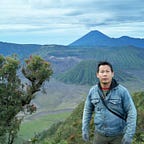The Fascinating History of Ratu Boko Temple
The history of Ratu Boko temple is an interesting story that deserves to be known
Hello guys, if in the previous article I only briefly discussed the history of Ratu Boko temple
But in this article, I will discuss in more detail this temple.
History of Ancient Mataram
It all started with a mix of cultures.
At that time there was a cultural mixing between Indian culture and Javanese culture.
So at that time, cultural acculturation was formed called Javanese Hindu culture
This cultural mixing occurred between the 8th-10th century period
At that time the glory of the Hindu kingdom flourished in the land of Java along with the Buddhist kingdom.
So this cultural influence from India is very deep
And can be seen in everyday life in terms of government, economy, agriculture, and even buildings
read also
Gedong Songo temple-beautiful Hindu temple in Central Java
Surakarta And Javanese Culture
The beginning of the entry of Hinduism into Java
The first wave of Hindu entry into Indonesia is estimated in the first and second centuries
Its peak period was around the 5th century
The influence of Buddhism entered around the 8th century
and quickly spread on the island of Java within a few years.
Hinduism, especially the Shiva sect, developed rapidly side by side with the Javanese kingdoms
and cooperating with them.
In its journey, Hinduism and Buddhism can go hand in hand.
In the 7th and 8th centuries, acculturation took place very quickly and deeply from Indian culture to local culture.
Archaeological Relics in the Prambanan Temple area
The existence of archaeological remains is an archive of the existence of a civilization in its time
Likewise, in the Hindu-Buddhist era, the formation of art at that time was widely seen in the form of religious buildings called temples.
If we look further, these artifacts are not just the physical appearance of the building at that time,
but even more
So is the complexity of culture and civilization
and the society behind its presence.
The Prambanan area is an area rich in archaeological clusters and sites.
Stamford Raffles considers Prambanan and its surroundings as the ruins of the city of Medang Kamulan
which is known as the capital of the Hindu Mataram Kingdom.
read also
Prambanan Temple- 12 facts you should know
History of Ratu (Queen ) Boko Site
The history of the Ratu Boko site begins with the resignation of Rakai Panangkaran or Tejahpurnapanne Panamkarana
The ancient Buddhist king of Mataram.
This king built the Abhayagirivihara monastery mentioned in the inscription of the same name in 792 AD.
The pavilion and the cave are the initial buildings of the temple on Walaingi Hill
and are then believed to be the Ratu Boko Site.
Rakai Panangkaran as the greatest king of Ancient Mataram resigned due to old age and wanted to be exiled.
The conclusion of the history of Ratu Boko temple
Ratu Boko site was founded by Rakai Panangkaran, a Buddhist king.
The monastery occupies a large area with a closed nature.
It is estimated that this temple was used by Rakai Panangkaran himself.
Although in the inscription it is referred to as a monastery,
in reality, it is not much different from the palace
The function of the Ratu Boko complex as a temple does not seem to last long.
Because in 856 AD there was an invasion and occupation of the complex
by Rakai Walaing Pu Kumbhayoni.
And there is an assumption that he is the founder of this building with a Hindu religious background
Around the settlement complex, many objects were found
That could be used as indicators of settlement, especially pottery shards.
